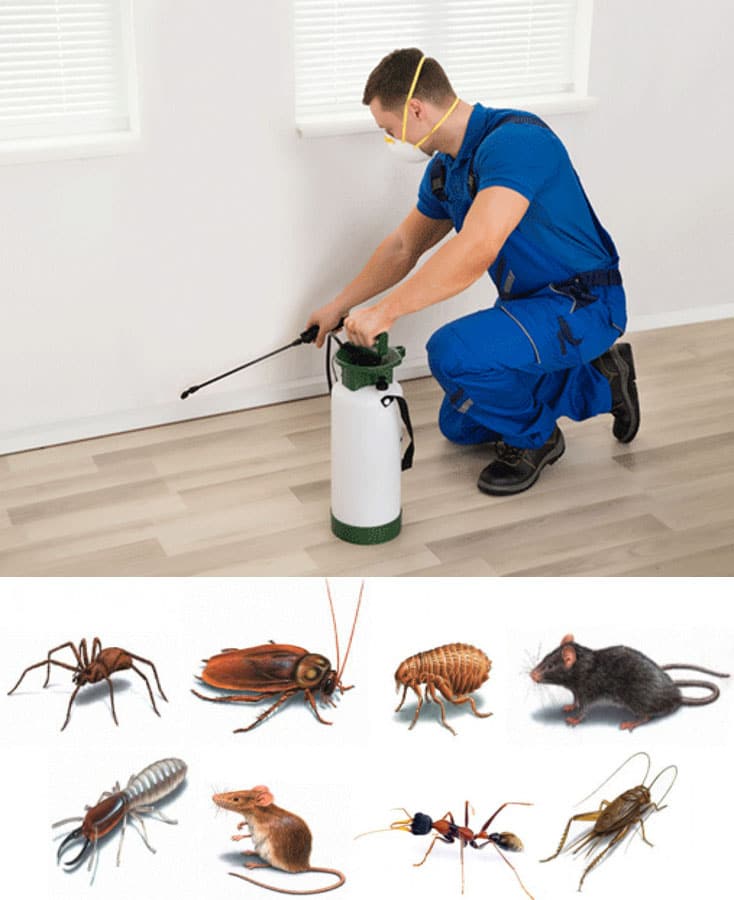Bed Bug Therapy Break Down: Comparing Chemical Vs. Non-Chemical Solutions
In the realm of pest control, particularly when taking care of the persistent issue of bed insects, the choice between chemical and non-chemical treatment services can be a crucial one. Both techniques use unique advantages and drawbacks, affecting elements such as effectiveness, safety and security considerations, and general expense. By checking out the nuanced details of each method, a more clear understanding of which course to go after in addressing a bed insect invasion can be attained.
Effectiveness of Chemical Therapies
Chemical treatments for bed insect infestations have actually been commonly identified for their potent and fast efficacy in getting rid of these bugs. When taking into consideration the effectiveness of chemical therapies, it is vital to understand that they can supply a quick and detailed solution to a bed pest issue.
Moreover, chemical therapies have the benefit of providing recurring impacts, implying that they can continue to remove bed bugs even after the first application. This residual activity is especially beneficial in combating any type of possible re-infestations. Additionally, the quick action of chemical therapies can bring alleviation to people encountering severe bed insect infestations, allowing them to restore control of their space promptly.
Safety And Security Interest In Chemical Solutions
One crucial aspect that requires cautious factor to consider when using chemical remedies for bed insect treatment is guaranteeing the safety of owners and the environment. Direct exposure to specific chemicals utilized in bed insect treatments can lead to breathing concerns, skin inflammation, or various other damaging responses, particularly in people with pre-existing problems or level of sensitivities.
In addition, the environmental influence of chemical remedies is another significant consideration. Some chemicals used in bed bug treatments might be unsafe to beneficial bugs, wildlife, and communities if they seep into the dirt or water supply. It is vital to make use of chemical therapies deliberately, following security standards, and thinking about much less poisonous choices to minimize these risks and make sure the effective and safe monitoring of bed insect invasions.
Advantages of Non-Chemical Strategies
Taking into consideration the potential security concerns and environmental impact connected with chemical remedies for bed insect treatment, checking out non-chemical strategies presents a promising option with several unique benefits. Non-chemical methods supply a much safer choice for households, especially those with youngsters, animals, or people conscious extreme chemicals. These strategies get rid of the threats of direct exposure to harmful compounds, minimizing the potential for negative health effects. In addition, non-chemical therapies are environmentally pleasant, as they do not add to air or More about the author water contamination, making them a sustainable option for parasite control.
In addition, non-chemical remedies can be reliable in targeting bed insects, including hard-to-reach areas where chemical therapies may not penetrate - A1 exterminator charlotte nc. Techniques such as warmth treatment, vacuuming, heavy steam cleansing, and bed mattress coverings give complete obliteration without the usage of damaging chemicals.
Limitations of Non-Chemical Treatments

In addition, non-chemical therapies commonly call for numerous applications to accomplish effective removal. This can be time-consuming and might not always assure total removal of all bed pests and their eggs, specifically in hard-to-reach or covert areas.
Additionally, the success of non-chemical therapies heavily relies upon appropriate implementation and thoroughness, which can be testing for people without expert proficiency. Poor application of non-chemical methods may result in insufficient elimination, causing relentless infestations and the requirement for added therapies.
Therefore, while non-chemical therapies have their advantages, it is vital to ant pest control acknowledge these constraints and consider them when determining the most effective technique for managing bed insect invasions.
Cost Contrast: Chemical Vs. Non-Chemical Options
Given the limitations connected with non-chemical treatments, a crucial facet to assess in the context of bed insect administration is the price contrast between chemical and non-chemical alternatives. Chemical treatments generally include the application of pesticides by professionals, which can range from $250 to $900 per space, relying on the intensity of the invasion and the size of the area to be dealt with. In comparison, non-chemical treatments like warm therapy or steam can be more pricey, with costs varying from $1,000 to $6,000 for a whole home. While the initial cost of chemical treatments might seem lower, several therapies may be called for to totally eliminate the infestation, potentially enhancing the total expense. On the various other hand, non-chemical options may offer an extra lasting and environment-friendly service, although they can be cost-prohibitive for some people. Ultimately, when considering the expense of bed pest therapy choices, it is very important to evaluate the upfront costs versus the performance and long-term sustainability of the selected technique.
Conclusion

Thinking about the potential security issues and Full Article environmental effect associated with chemical solutions for bed bug therapy, checking out non-chemical methods provides an appealing choice with several distinct benefits.Offered the limitations linked with non-chemical therapies, a crucial aspect to review in the context of bed insect administration is the price comparison between chemical and non-chemical options. In comparison, non-chemical treatments like heat therapy or vapor can be extra expensive, with expenses varying from $1,000 to $6,000 for an entire home. While the initial cost of chemical treatments might appear lower, multiple therapies might be called for to fully eliminate the invasion, potentially boosting the general cost.In verdict, when comparing chemical and non-chemical bed pest therapy alternatives, it is crucial to take into consideration performance, safety and security, advantages, constraints, and cost.